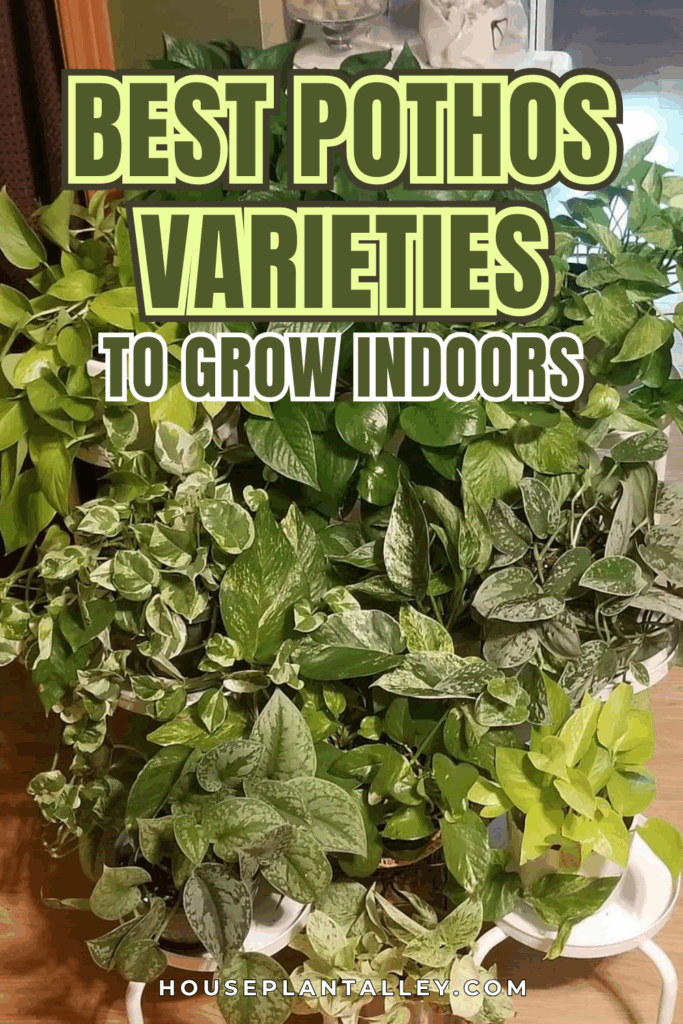You’ve probably seen those gorgeous trailing plants hanging from shelves in stylish homes on Instagram or Pinterest. They’re often called “pothos,” but here’s a little secret: not all of them are true pothos! The plant world can be confusing, especially when labels at garden centers aren’t always accurate. If you want a plant that actually thrives in your space, it’s important to know what you’re really buying. Let’s break it down in a simple way so you can pick the best pothos for your home—and keep it happy and healthy.

🌱 What Is a Real Pothos?
True pothos plants belong to a group called Epipremnum, and the most common type is Epipremnum aureum. But here’s the tricky part: some plants that look like pothos aren’t actually in that group.
- Silver Satin Pothos is often sold as a pothos, but it’s really a Scindapsus.
- Heartleaf Philodendron looks a lot like pothos too, with its heart-shaped leaves and trailing vines, but it’s a totally different plant.
- Fun fact: Epipremnum aureum used to be classified under Scindapsus, which is why the mix-up still happens today.
Knowing the difference helps you choose the right plant for your lighting and care needs.
🌿 Best Pothos Varieties to Grow Indoors
Here are some of the most beautiful and beginner-friendly pothos types you can grow at home:
|
Variety |
Description |
Growth Speed |
Best For |
|---|---|---|---|
|
Golden Pothos |
Green leaves with golden-yellow streaks |
Fast |
Most indoor spaces |
|
Neon Pothos |
Bright lime-green leaves that pop in any room |
Medium |
Adding bold color |
|
Snow Queen |
White and green leaves with dramatic contrast |
Slow |
Bright rooms |
|
Marble Queen |
Creamy white marbling on green leaves |
Medium |
Stylish shelf displays |
|
N’Joy |
Small leaves with white edges, compact and tidy |
Slow |
Small spaces or desktops |
|
Pearls & Jade |
Speckled white and green leaves with a compact shape |
Slow |
Hanging planters |
|
Glacier Pothos |
Tiny leaves with frosty white and green patterns |
Slow |
Office shelves or corners |
|
Jessenia Pothos |
Lime-green marbling on darker green leaves |
Medium |
Low-light areas |
|
Manjula Pothos |
Wavy leaves with cream, silver, and green variegation |
Medium |
Statement plant spots |
|
Cebu Blue |
Silvery-blue leaves with a sleek, modern look |
Medium |
Minimalist decor |
☀️ Easy Pothos Care Tips
Pothos are super forgiving and easy to care for. Here’s what they need:
- Light: Bright, indirect sunlight is best. They can handle low light, but don’t put them in direct sun—it’ll burn the leaves.
- Water: Let the soil dry out between waterings. If the leaves start curling, it’s time to water.
- Soil: Use a well-draining potting mix to avoid soggy roots.
- Temperature: Keep them in rooms between 60°F and 80°F (15°C to 27°C).
- Fertilizer: Feed them once per season with liquid fertilizer. Follow the instructions on the bottle.
- Pruning: Trim long vines to make the plant fuller. You can use the cuttings to grow new plants!
🌡️ Creating the Best Environment

Want your pothos to really thrive? Here’s how to make their space perfect:
- Light: Place them a few feet away from a window. Direct sunlight can damage their leaves.
- Humidity: They like humidity but don’t need misting or humidifiers. Normal household air is fine.
- Temperature: Most homes are already in the ideal range, so no need to adjust much.
✂️ How to Prune and Propagate
Pruning helps your pothos grow bushier and healthier. Just snip off long vines with clean scissors.
To grow new plants:
- Cut a vine with at least one node (the bump where leaves grow).
- Place it in a jar of water with the node submerged.
- Roots will appear in about two weeks!
- Once roots are a few inches long, you can plant it in soil.
🐾 Is Pothos Safe for Pets and Kids?
Unfortunately, pothos plants are toxic if eaten. They contain calcium oxalate crystals, which can cause mouth pain, drooling, and stomach issues in pets and children.
Here’s how to keep everyone safe:
- Place plants high up, like on shelves or in hanging planters.
- Avoid rooms where pets and kids play, like living rooms or playrooms.
- Use wall-mounted holders or tall plant stands to keep them out of reach.
🌟 Final Thoughts
Pothos are one of the best houseplants for beginners and plant lovers alike. With so many beautiful varieties and easy care routines, they’re a great way to add greenery to your home. Just make sure you’re picking a true pothos and placing it somewhere safe if you have pets or little ones around.
